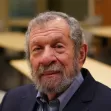The Daily Source of Urban Planning News
Detailing DC's Shift to Walkable Urbanism
Walkable urban places are poised to "put a foundation under the economy as well as government tax revenues," concludes Christopher Leinberger in a new report. Better! Cities & Towns delivers some highlights from his much anticipated study.
Is New York Doing Enough to Prepare for Rising Seas and Severe Storms?
Critics contend that New York's so-called resilience strategy doesn't go far enough in protecting the city's 520-mile-long coast and low-lying areas from the threats of rising seas and ever-more-severe storm flooding, reports Mireya Navarro.
Will Portland-Style Apartments Catch On in San Francisco?
It's a mere 12 units but a huge test for apartments with no auto parking but plenty of bike parking. The 5-story, mixed-use Mission District building was unanimously approved by the Planning Commission on Sept. 6 despite neighborhood opposition.
Defying the Odds, Bakersfield Booms
California's Central Valley was one of the areas hardest hit by the Great Recession, with several of its cities still burdened by the worst unemployment rates in the country. Signs in Bakersfield, however, point to a burgeoning boom.
Power Play Imperils Preservation in Louisville
A contentious new ordinance gives Louisville's Metro Council final say in the city's landmarks decisions. Some are blaming a recent preservation victory for spurring what could be a major setback for historic preservation in Derby City.
Will Digital Divide in Kansas City Exacerbate its Historic Racial Divide?
The competition to determine which communities in Kansas City will qualify to receive Google Fiber, the nation's fastest internet service, has stoked fears of increasing the city's historic patterns of segregation, reports John Eligon.
Will Visions of a Vegas on the Manzanares Materialize?
Late last week, billionaire casino magnate Sheldon Adelson announced that Madrid had won the competition to become the future location of Europe's "largest gambling mecca," reports Giles Tremlett. Questions regarding the project's viability remain.
Facing the Hard Facts of Economic Development
Can community building deliver more jobs than trying to lure back an industrial sector that's been leaving the U.S. for decades?
Who Defines New York's Nabes? For Starters Look to These Amateur Mapmakers
In New York, neighborhood boundaries are big business. Just ask any real estate agent who's tried to pass off a Gowanus apartment as being in Park Slope. Since the city does not officially define boundaries, amateurs are filling the void.
Steer Clear of the 5 Most Dangerous Roads in the World
Writing for <em>Yahoo! Travel</em>, Aefa Mulholland identifies five of the most dangerous roads in the world - from India's chaotic city streets to Bolivia's mountain hugging back roads.
Are Democrats Really the Party of Urban America?
Will Doing wonders why, at the Democratic National Convention last week, the challenges facing cities, and the benefits they bring to the country, were never mentioned.
Shadow of the Wall Remains Visible in Still-Divided Berlin
The no man's land once occupied by the Berlin Wall has been the focus of redevelopment efforts for nearly two and a half decades now. But the slow pace of rebuilding means the scars of the Cold War remain visible across the city's landscape.
Cycling Renaissance Races Across America
From coast to coast, cities across the United States are experiencing a rise in bicycling. Local governments are leading the peloton, with cycle-friendly policies and increases in government funding spurring a municipal pedal pursuit.
Arizona Activist Defends Planning from Tea Party Assault
Greg Hanscom profiles Stacey Champion, an environmental consultant and PR specialist who uncovered, and defeated, shady efforts to ban sustainability planning in Arizona.
Land Use Battles a Blight on City Budgets
The recent bankruptcy of the California city of Mammoth Lakes - brought on by a $43 million court decision in favor of a developer - is an extreme example of the cost of land use disputes. But it's indicative of a widespread problem in the state.
Is Downtown Any Place to Raise a Family?
Certainly, says Brent Toderian. And with children "the indicator species of a great neighbourhood," he argues that cities should be designed with families in mind.
Presidential Candidates Address Climate Change
The Democratic and Republican presidential candidates could not have more different approaches to climate change. Mitt Romney joked about it in his acceptance speech at the Republican convention while President Obama vowed to reduce carbon pollution
With Town Center Projects, Can the Suburbs Challenge Cities Yet Again?
Chasing the widespread interest in city living, developers are exporting mixed-use urbanism to the suburbs and exurbs as "town center" projects, prompting Jonathan O’Connell to ask if "a city can be a city if it’s built in the middle of a cornfield."
Philly Prioritizes Public Access with Hiring of Chief Data Officer
Self-described "civic hacking veteran" Mark Headd has joined Philadelphia Mayor Michael Nutter's administration as the city's first "chief data officer," with the mission of "improving public access to information the city collects."
Buffalo Dusts Itself Off
After years wasted trying to implement large-scale redevelopment of its formerly industrial waterfront, Buffalo is cleaning up its shores from the ground up, reports Daniel Robison.
Pagination
Yukon Government
Caltrans
New Jersey Institute of Technology
Mpact (founded as Rail~Volution)
City of Camden Redevelopment Agency
City of Norman, Oklahoma
City of Portland
City of Laramie
Urban Design for Planners 1: Software Tools
This six-course series explores essential urban design concepts using open source software and equips planners with the tools they need to participate fully in the urban design process.
Planning for Universal Design
Learn the tools for implementing Universal Design in planning regulations.


































